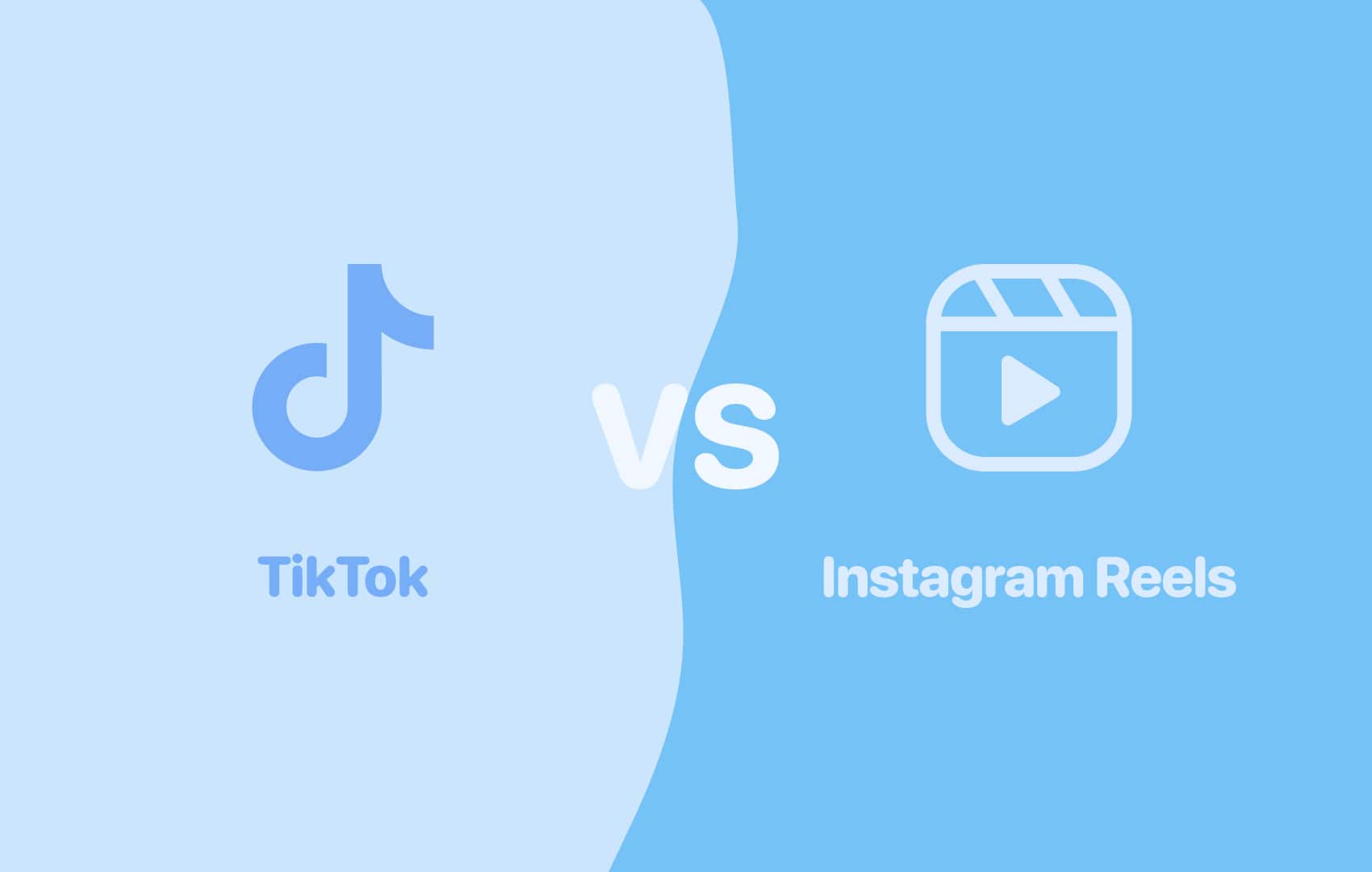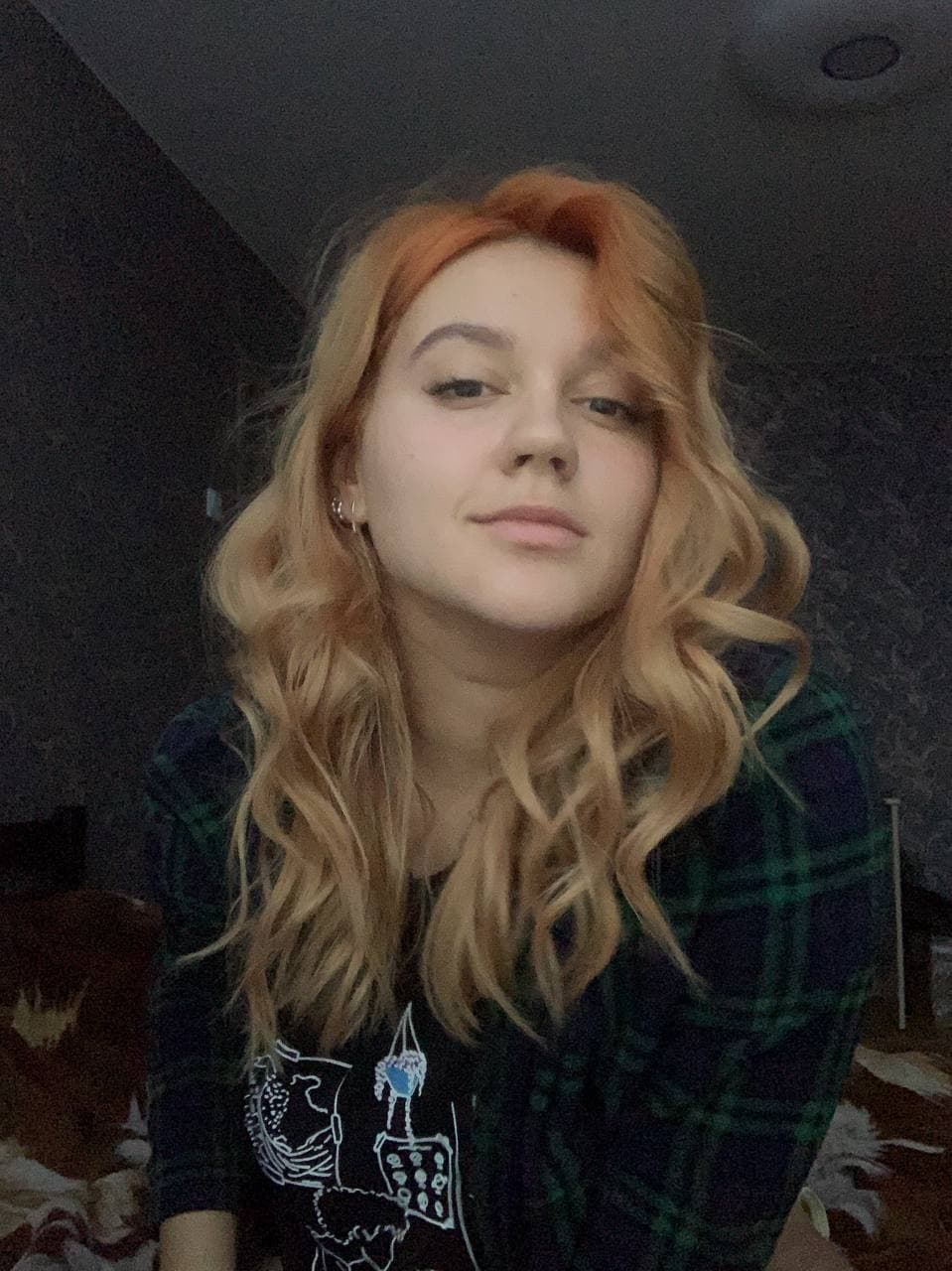Anatomy of a Creative Department: Creative Team Best Structure

A creative team has to work like clockwork. Each part of it must have its mission, and only in cooperation, they can reach perfection. Whether you're a designer, writer, marketer, or simply a passionate reader, you must know (if you still don’t) that collaboration is essential to bringing your best ideas to life.
Consequently, composing the best creative team is only possible with a deep understanding of its functional parts. Hence, in this piece, we'll explore different team types, roles, and challenges they may face. So, without further ado, let's dive in!
Who is on a creative team?
It’s worth noting that the creative team composition varies depending on the project, tasks, and other variables. Nonetheless, a successful creative team consists of individuals with varying experiences and expertise. If you wonder how to structure a creative team, bear in mind that it should be organized by
"quality, not quantity,"
meaning that each team member brings their unique talents to the table, contributing to the team's overall creative output. In this section, we'll take a closer look at who typically makes up a creative team, what their roles are, and how they work together to bring projects to life. Let’s move on, shall we?
Creative director and/or project manager
In a creative team, the Creative Director and the Project Manager are like the Batman and Robin duo, except they don't wear capes most of the time. These two roles are essential to the team's success.
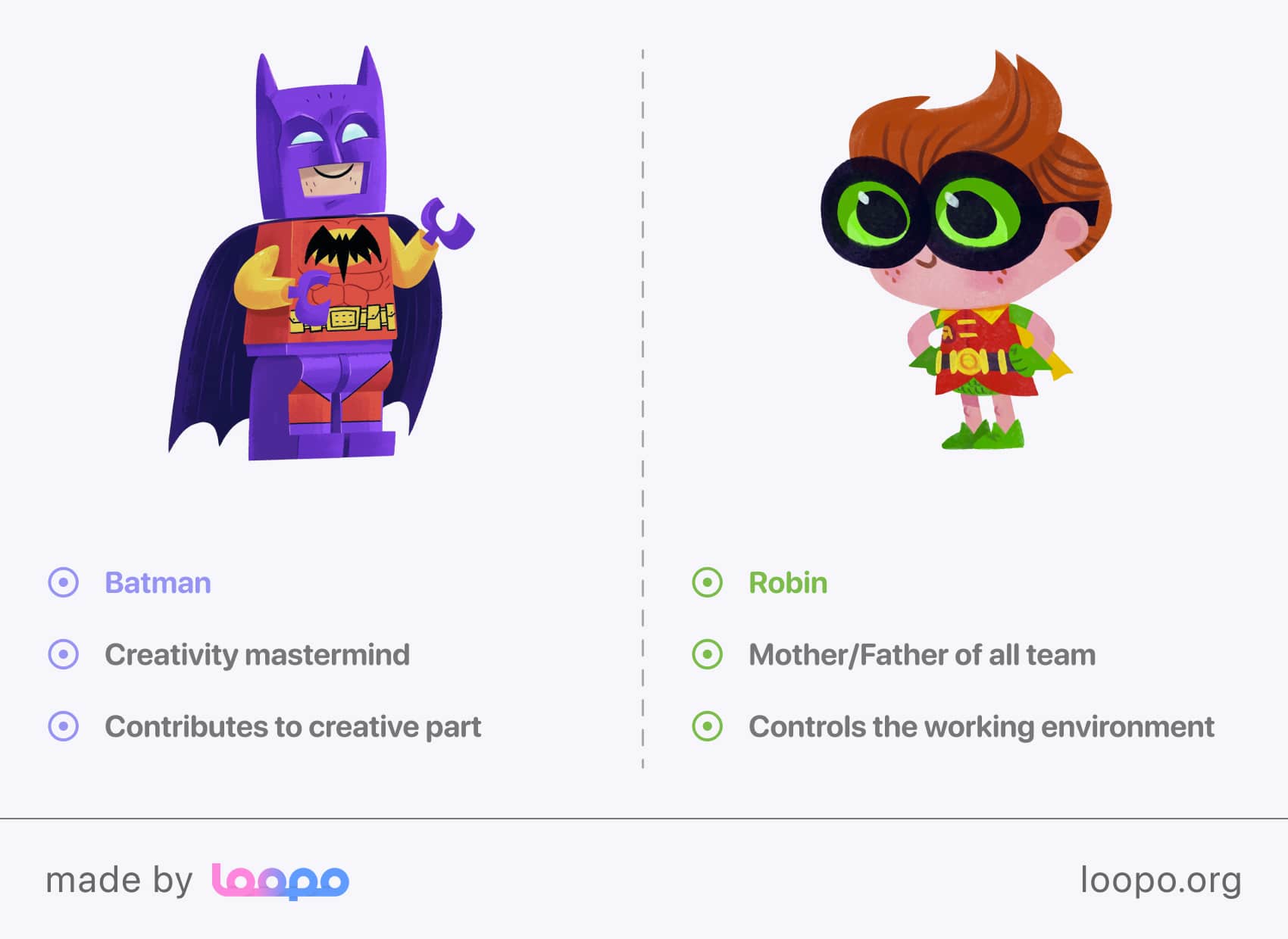
The creative director is usually a team’s genius. They're the ones with the big ideas and the vision for the project. They work closely with the team to come up with ideas that are not only creative but also aligned with the project goals. Normally, they can boast plenty of experience in design, advertising, or marketing. The lion’s share of their work is providing feedback and guidance on design concepts, copy, and other creative elements, making sure that everything is up to par.
While the creative director is busy contributing to the team's creativity, the project manager is like a panacea for the team. They are like the glue that holds everything together. PMs are often organizers, planners, and problem-solvers. Creative team project management is all about making sure that everyone is on the same page, the project timeline is on track, and the budget is well-managed. Project managers closely communicate with the client, keep them updated about the project's progress and address any concerns they may have.
Strategist
In a creative team, the strategist is like the navigator, charting the course for the project. They are responsible for developing the overarching strategy that guides the team's creative direction. Your ideal strategist must have a deep understanding of the client's goals and target audience. In addition, the strategist has to know how to put the theory into practice, using this knowledge to develop a strategic plan that meets the client's needs and achieves their desired outcomes.
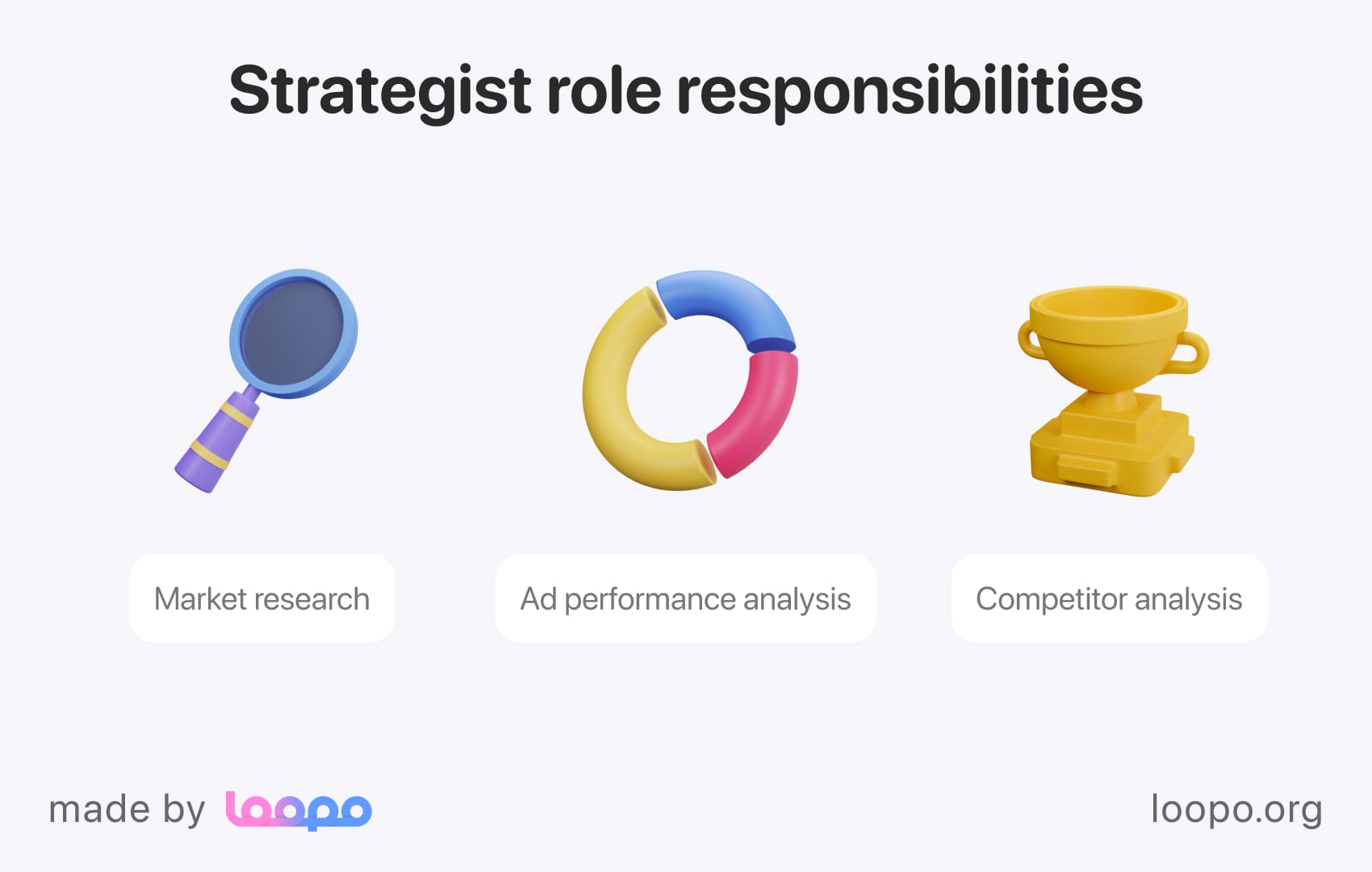
The strategist collaborates closely with the creative director to develop creative concepts that align with the strategic plan. They provide insights and guidance on the messaging, branding, and overall creative direction to ensure that everything is in line with the project's strategic objectives.
One of the strategist's key roles is to keep the team focused on the big picture. They ensure that the team is not just creating beautiful designs or catchy slogans but that everything is aligned with goals and works in compliance with the philosophy or the idea of the client. They also help the team stay on top of emerging trends and shifts in the market, ensuring that the project remains relevant and impactful.
Copywriter
In a creative team, the copywriter is a storyteller. He is responsible for crafting the words and messages that convey the project's ideas and values to the target audience.
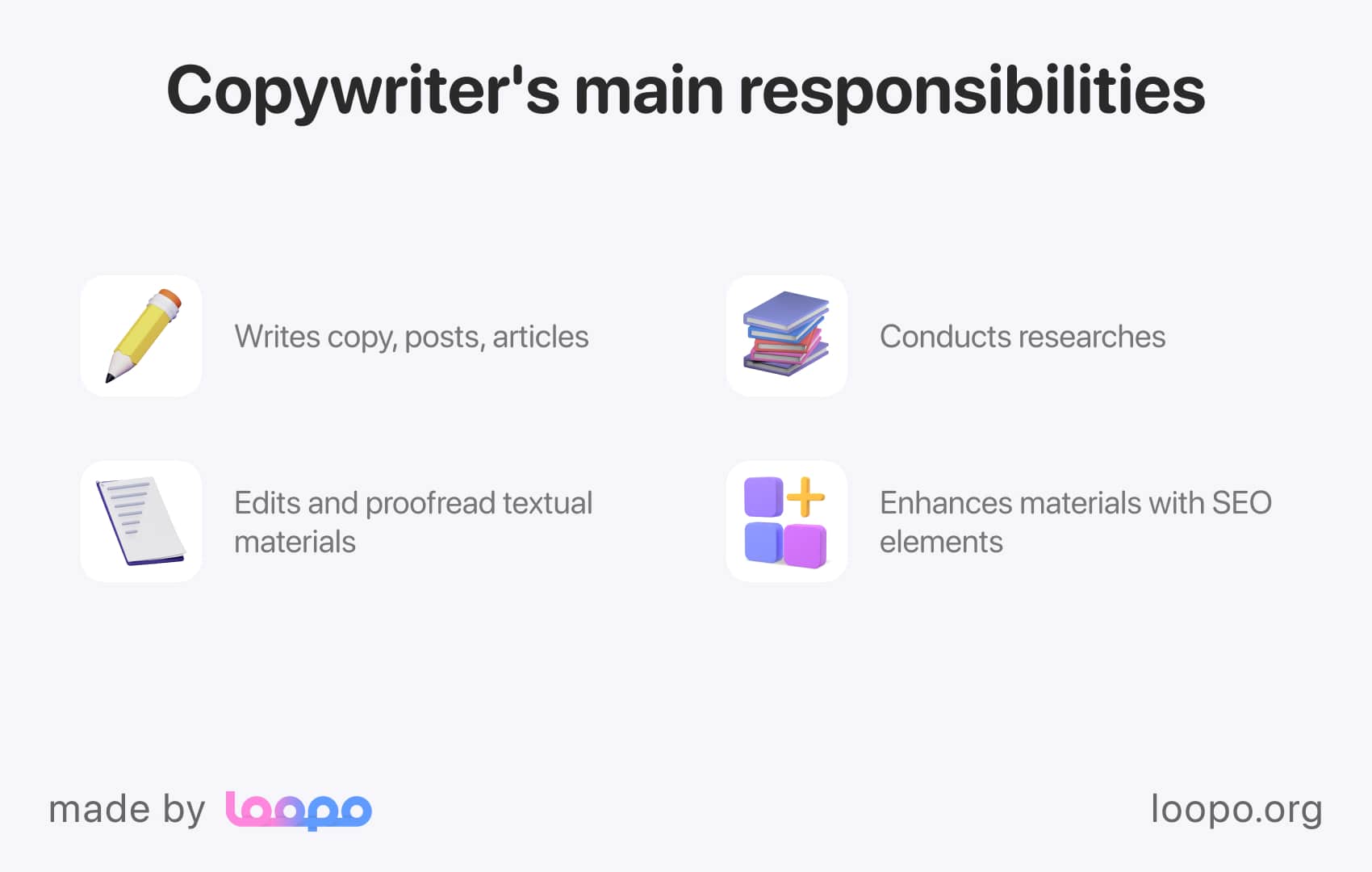
They closely collaborate with other members of the team to develop a brand’s message to the user. They create body copy, headlines, and social media posts that make up the project's overall communication. Professional copywriters also ensure that the tone and voice of the copy are consistent with the project's brand identity and message.
Copywriters must have a keen eye for being clear, concise, and engaging in doing their work. They use their skills to create copy that grabs the audience's attention and holds it. They also ensure that the copy is written in a way that is accessible and easy to understand, regardless of the audience's level of familiarity with the subject matter.
In short, the copywriter is the storyteller of the creative team. They use their mastery of language to create compelling messages that resonate with the audience and bring the project to life. With their skills, they can turn complex ideas into simple ones, shedding light on the hardest topics.
SEO specialist
In a creative team, the SEO specialist is a Jimmy Neutron from the world of search engines. You may wonder why search engines? Well, SEO, in this matter, stands for Search Engine Optimization. Makes sense now, huh?
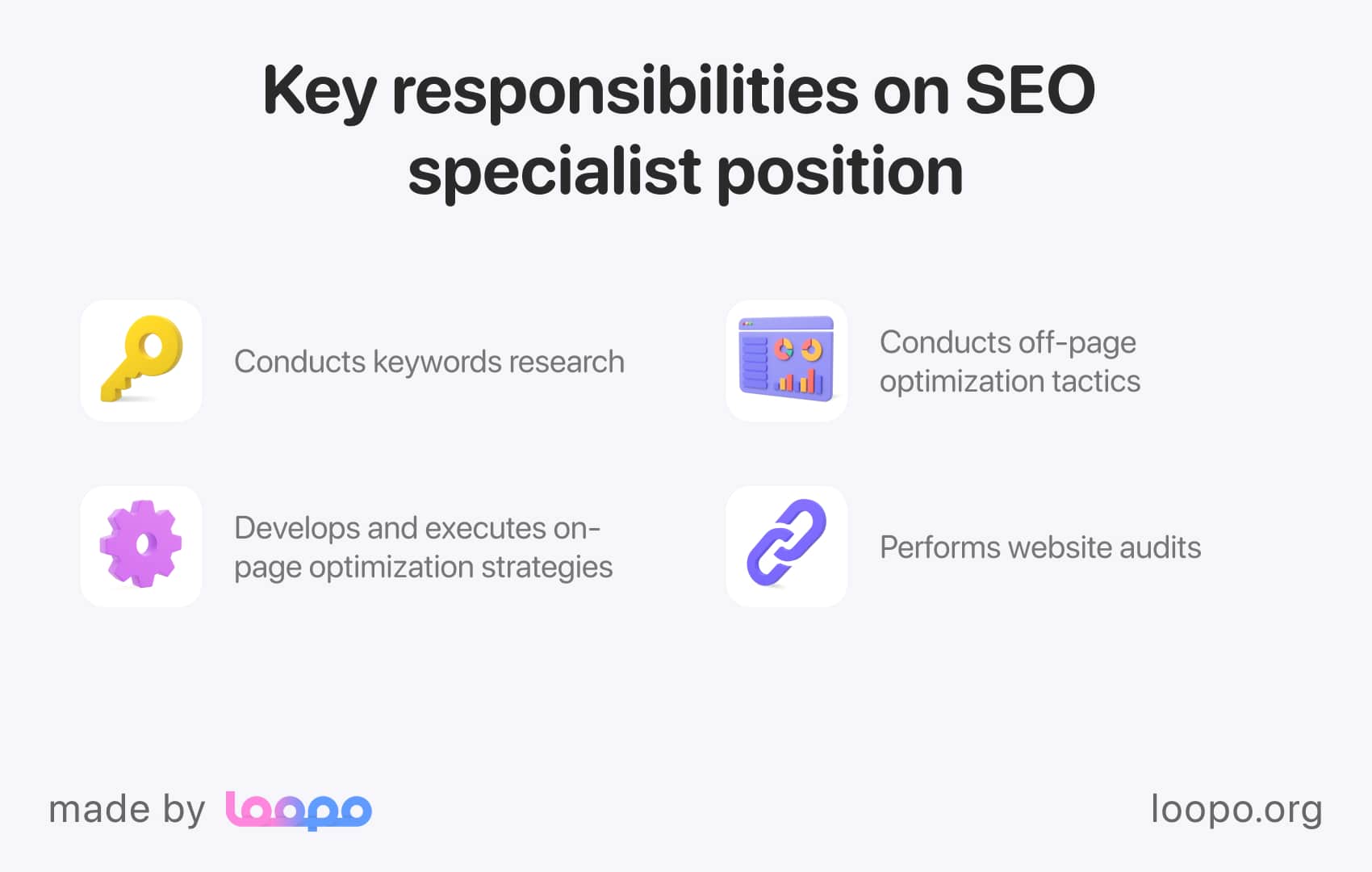
SEO specialists are responsible for ensuring that the project ranks well on search engine results pages (SERPs), driving traffic to the client's website and increasing their online visibility.
They do numerous tasks, such as conducting keyword research and analysis to identify the keywords and phrases that the target audience is searching for. They use the collected info to come up with a strategy for incorporating these keywords into the project's content, ensuring that it is well-optimized for search engines.
One of the SEO specialist's key roles is to ensure that the project is optimized for current best practices, and they are always on the lookout for new ways to improve its ranking in the search results. For instance, a good SEO specialist has to take care of increasing the number of backlinks, which are used to represent another website's traffic coming to your own site. They also need to create a link-building strategy, which helps to neatly organize all links involved in your site’s promotion.
Another curious thing in the SEO world is the E-E-A-T term. It stands for Experience, Expertise, Authoritativeness, and Trustworthiness and represents a framework that Google utilizes to analyze the quality of the content published on websites. If you wonder
What it actually does?
Adhering to it greatly increases mobile-friendliness;
It ensures the website has a secure connection (HTTPS);
It helps to increase page speed;
It emphasizes accessibility for people with disabilities;
Makes sure the content is easy to understand and has suitable spacing, fonts, and colors.
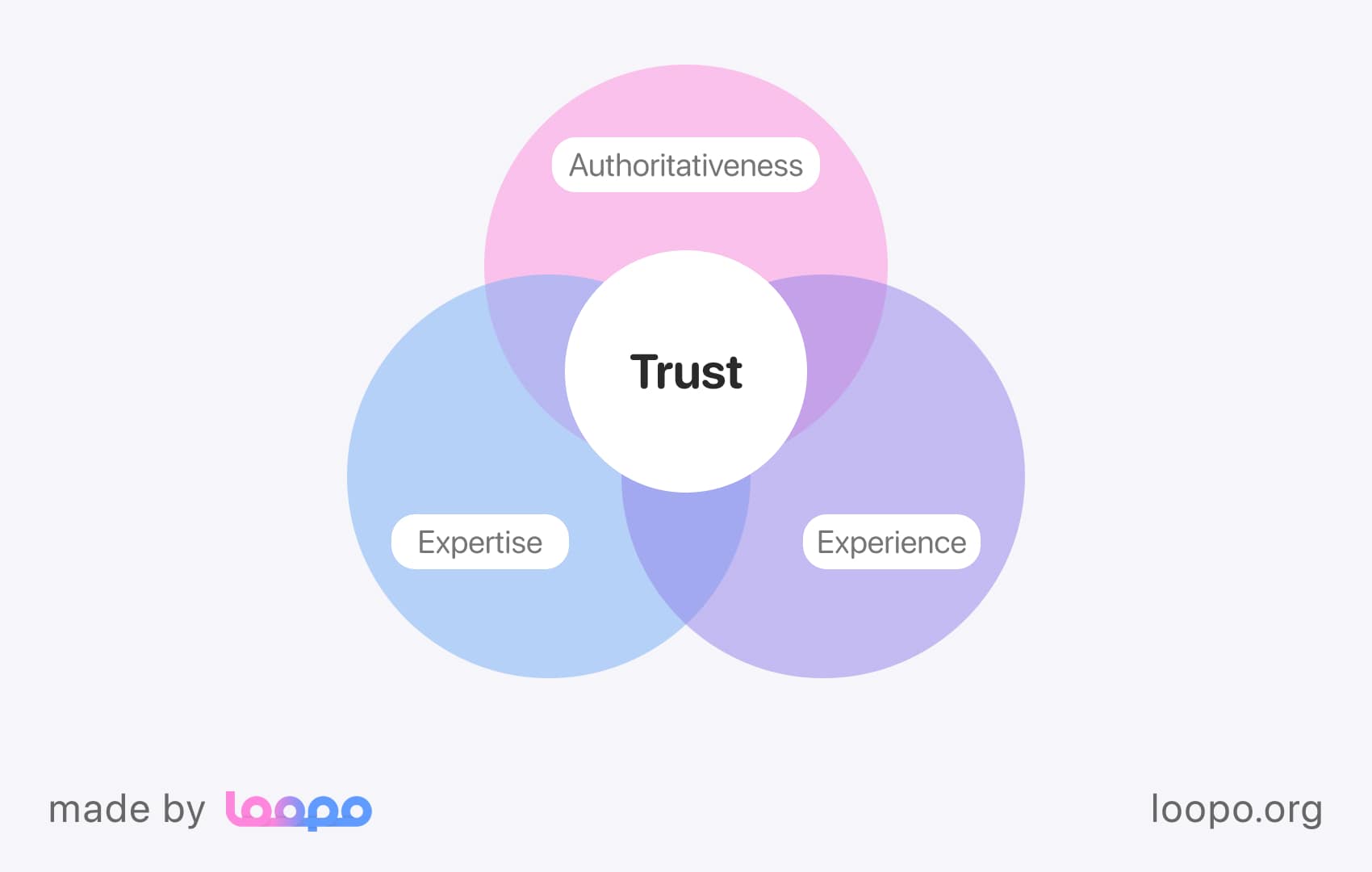
Overall, EEAT is helpful to figure out the value of your website. Adhering to this approach can show you how Google treats your website and you may see ways to improve your ranking too! Feel free to dive deep into how EEAT works.
Graphic designer
They are an essential part of the creative team. Graphic designers are the ones who make people go “WOW”.
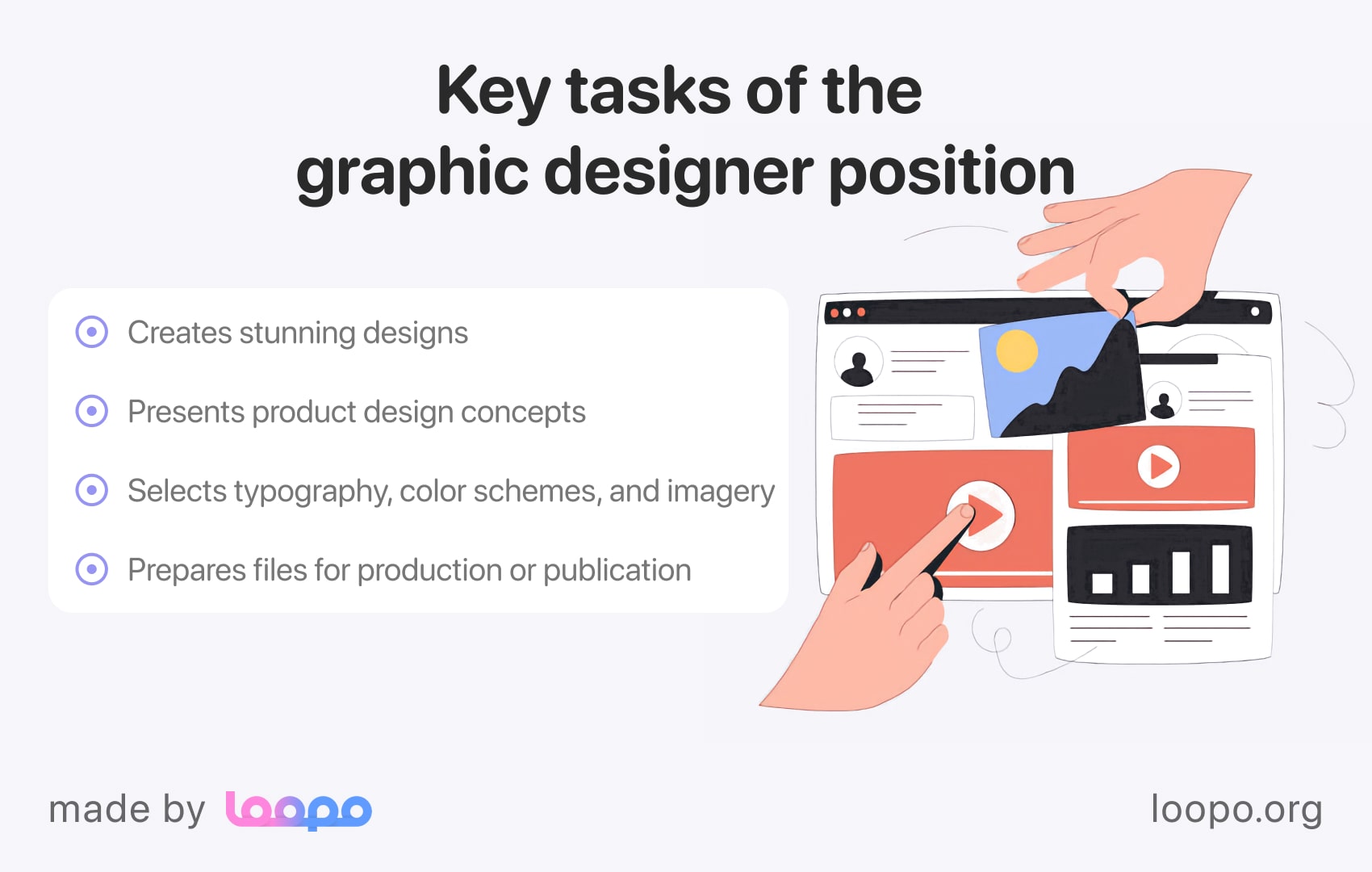
They are responsible for creating the visual elements of the project, such as logos, typography, illustrations, and overall design aesthetic. They create mood boards and design concepts that bring the project's ideas and values to life in a visually compelling way.
One of the graphic designer's key roles is to ensure that the project's visual elements are both aesthetically pleasing and functional. They use their skills to create designs that not only look great but also serve a specific purpose, whether it's to drive engagement, share a message, or increase brand recognition in a clear and impactful way. Needless to say, how important it is to keep up with consistency throughout all work graphic designers do. They must ensure the corporate identity is recognizable and is similar everywhere. Just like a Batman logo!
Web developer
It’s the guy that makes everyone’s work visible on the web. A web developer is a behind-the-scenes wizard who is using their expertise to bring the project to life in the digital world.
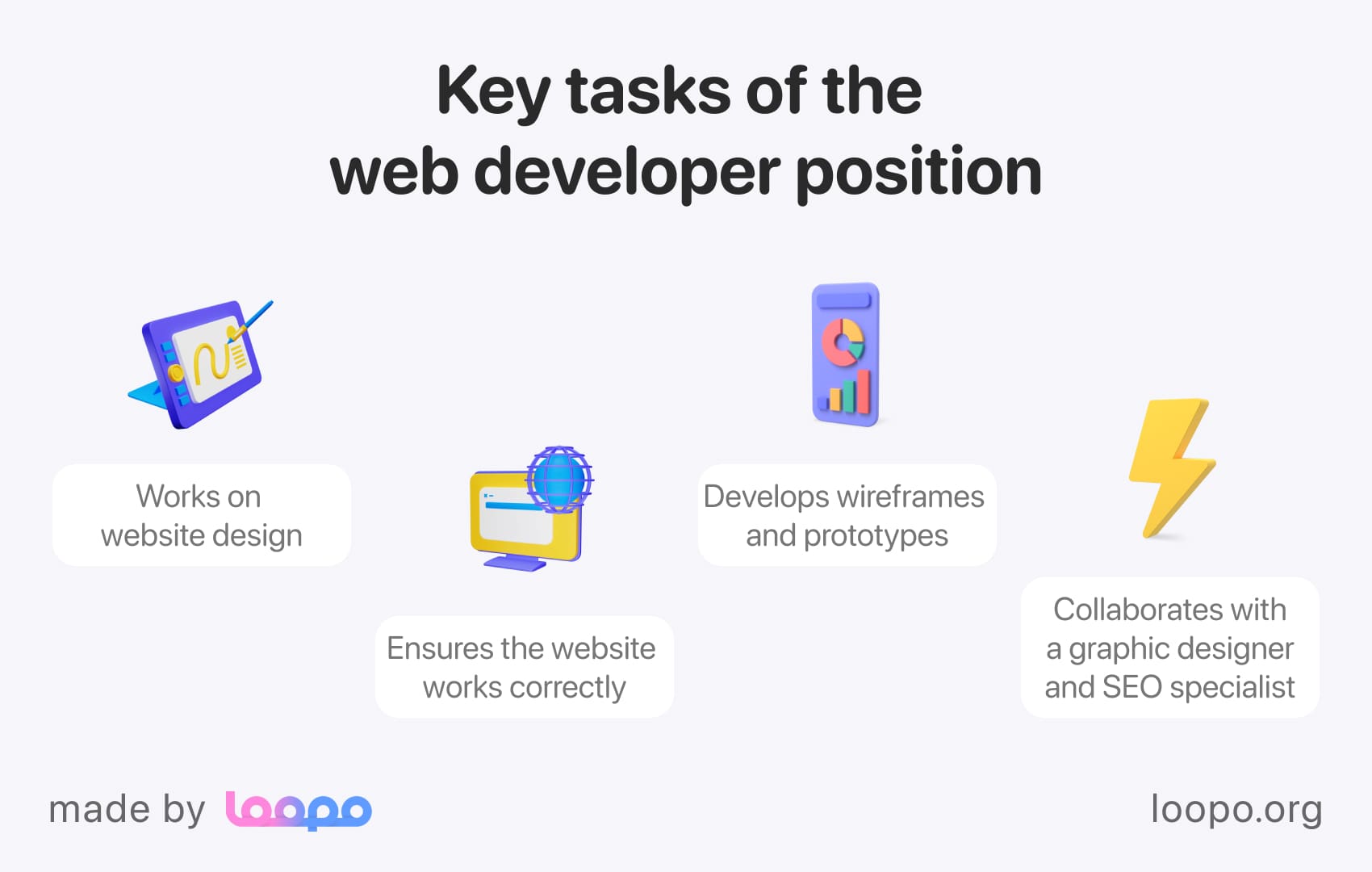
They are responsible for building and maintaining the project's website or other digital assets, ensuring that everything is functional, user-friendly, and visually appealing.
Combining the team’s creativity and their own tech skills, web developers create a seamless user experience, ensuring that visitors' journey through the website is easy and memorable.
Social media manager
Last but not least, the social media manager is the one who manages the project's social media presence and engages with the audience.
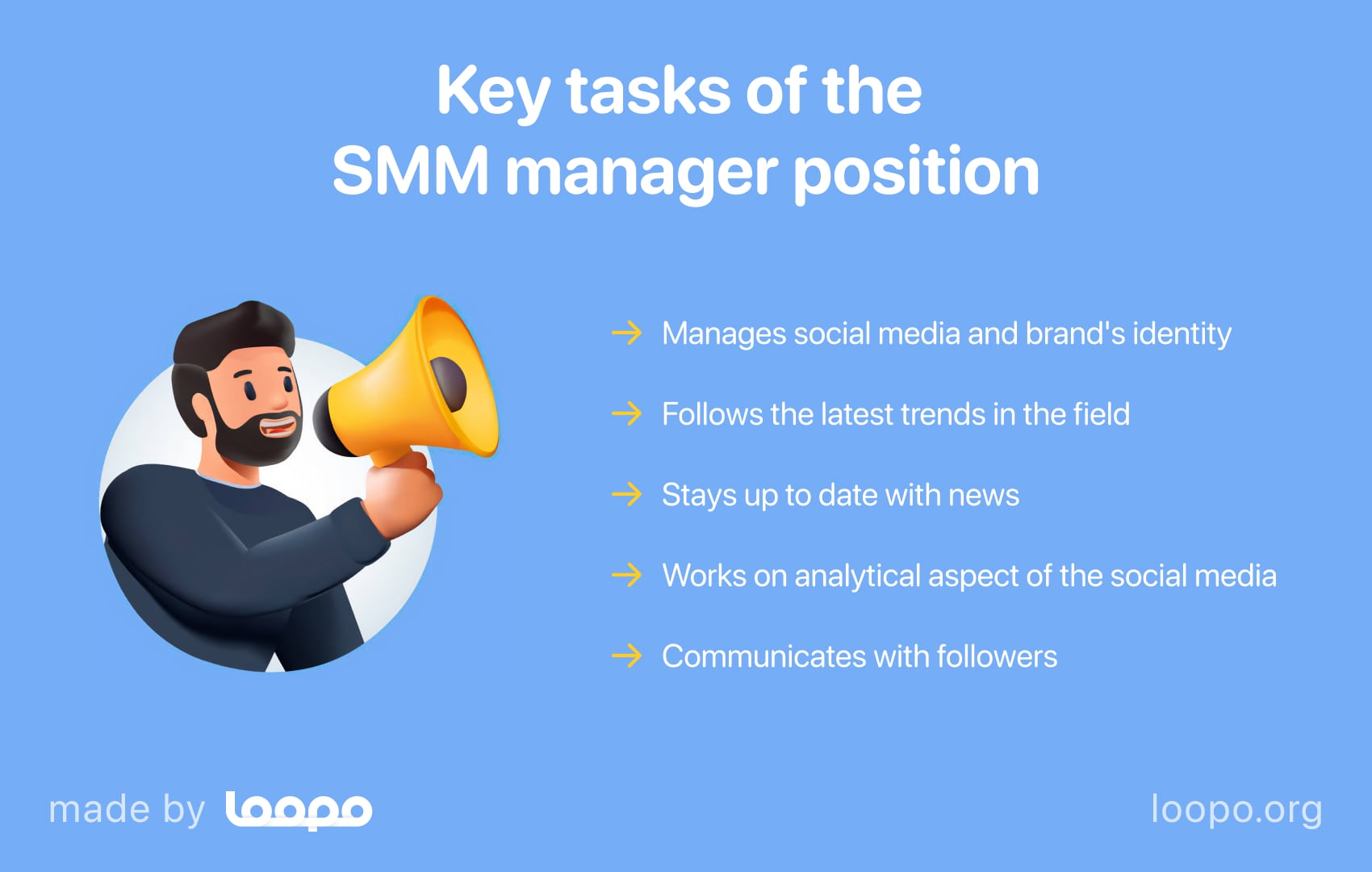
They are responsible for creating and implementing a social media strategy that aligns with the project's overall messaging and creative direction.
They create social media calendars and content plans that bring the project's ideas and values to life in a way that resonates with the audience. Neither product is successful without an audience. Hence, it’s the SMM manager’s top priority to build a community around the project. They use their skills to create and curate content that drives engagement and conversation on social media platforms. They also monitor and respond to comments and messages, ensuring that the project is responsive and engaging with the audience.
Types of creative team structures
When it comes to building a creative team, there is no one-size-fits-all solution. There are simply too many variables: the project's scope, goals, budget, etc. That’s why different team structures may work better than others. In this section, we'll explore some of the most common types of creative team structures and the benefits and drawbacks of each. Whether you're building a team from scratch or rethinking your current creative team structure, this section will help you find the best fit for your project.
Disclaimer: the pros and cons of each creative team structure can vary depending on the specific needs and goals of your organization. It's worth considering these factors carefully when deciding whether a structure you pick is right for your team.
Centralized
When an in-house creative team structure is centralized, it means that the power and decision-making abilities are concentrated in the hands of just a few people. This can be a very helpful approach because the decision-makers are usually working closely together and in the same location, like an office. Here’s what it usually looks like:
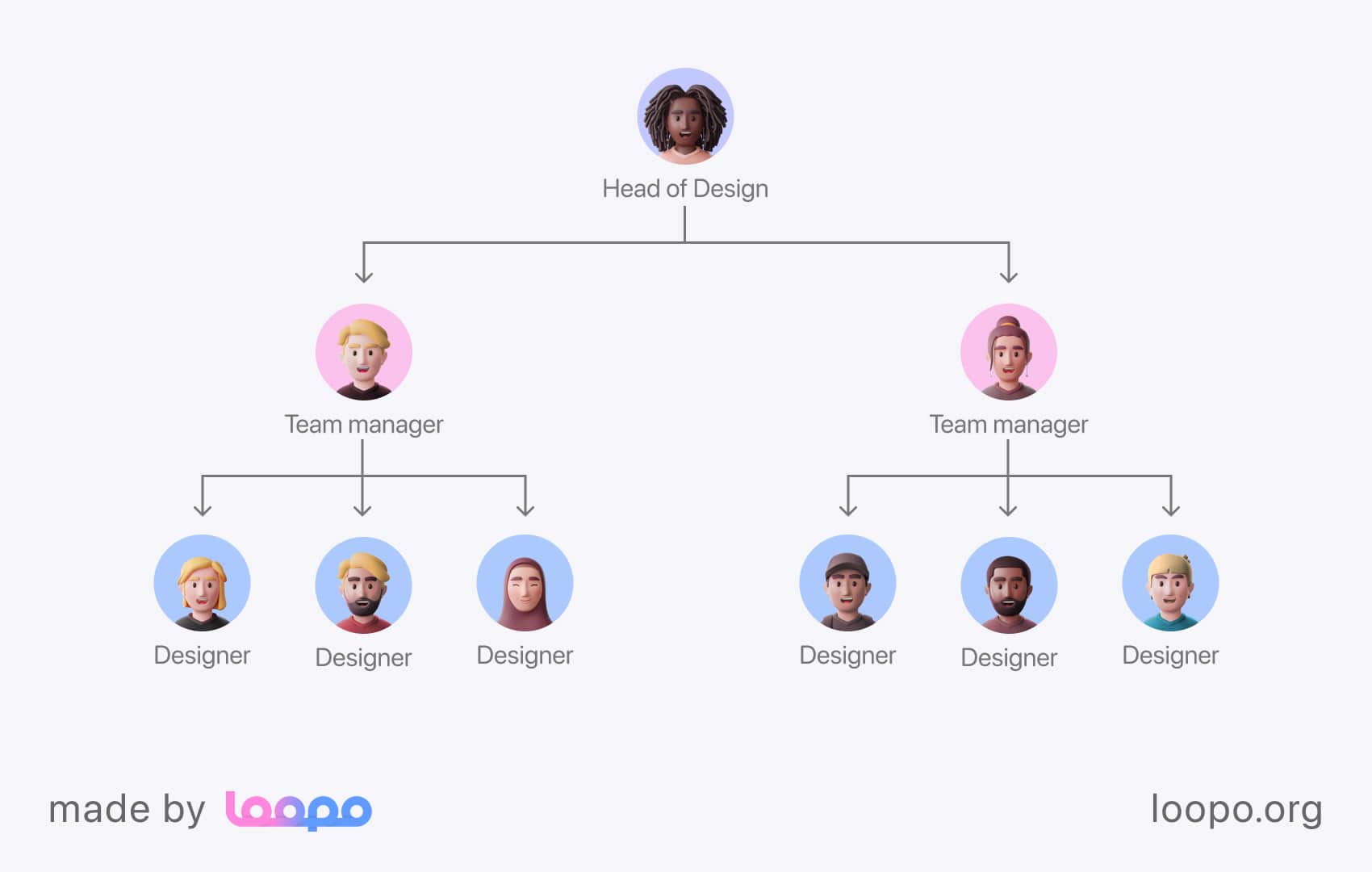
Let’s take a look at why you should consider it.
Benefits of the centralized team model
Well-defined roles on the team. As simple as that, with a clear structure, all team members have their specific tasks, which is highly efficient.
Fewer conflicts within the team. Referring to the previous point, when everybody knows their tasks, the chance of conflicts happening is very low.
A clear focus on the vision for all projects. With transparent management, team members get a balanced working environment resulting in a clear understanding of the philosophy or idea behind the project.
But it's not all sunshine and rainbows. Unfortunately, there are disadvantages too.
Drawbacks of the centralized team model
Bureaucracy. The more people are in between team members and decision-makers, the more time it takes to approve certain features, designs, or copies.
Creativity can suffer because of structural complexity. Pretty self-explanatory, the more bureaucracy and “mandatory” actions people should make, the less creative they can be.
Isolation. The bigger the structure and departments – the less communication between them. Simply put, the team can become very isolated from other parts of the organization resulting in disagreements.
Cross-functional
A cross-functional (i.e., embedded) structure in a creative design team is all about breaking down traditional departmental structures and bringing together team members from different functional areas to work collaboratively on a project. This means that instead of having separate departments for design, copywriting, and content creation, for example, all of these team members are brought together into one cohesive unit.
With a cross-functional structure, each team member brings their unique skill set and perspective to the project. This can lead to more diverse ideas, a broader range of expertise, and, ultimately, better creative output.
Let’s look at the pros and cons to simplify your choice of course. So, on the one hand, we have pros:
Cross-functional structure pros
Diverse perspectives and expertise. Bringing together team members from different functional areas unites a lot! It can lead to more diverse ideas and a broader range of expertise. No doubt, the creative output is usually marvelous.
Efficient collaboration. With team members working together in one cohesive organism, there’s plenty of room for efficient collaboration, effective communication, and no space for delays caused by going back and forth between departments.
Democratic decision-making. A cross-functional structure can promote a more democratic approach to decision-making, where everyone has a voice and contributes to the project's success.
On the other hand, the cons are as follows:
Cross-functional structure cons
Difficult workload distribution. With team members working together on multiple projects, it can sometimes be challenging to manage workload distribution fairly. Not to mention the time-tracking software, KPIs, and other stuff.
Lack of clear leadership. Needless to say that sometimes teams need a strong leader. With this structure, though, teams can be more confused here and there feeling the lack of direction.
Difficulty in maintaining expertise. Without designated departments, it can sometimes be challenging to maintain specialized expertise in specific areas of the creative process.
Flexible
A flexible structure in a creative team is all about being adaptable and working together in a way that suits everyone's unique skills and preferences. It's like having a team of superheroes with different powers all coming together to save the day!
One way | Another way |
To do this is by forming cross-functional teams that bring together people from different backgrounds and areas of expertise. This is beneficial to everyone as they can learn from each other and come up with more creative and innovative ideas. | Is to be flexible by embracing remote work and flexible schedules. This means that team members can work from wherever they want and at a time that suits them. So if you're a morning person, you can start to work early, and if you're a night owl, you can work later. |
Ultimately, a flexible structure in a creative team leads to a more dynamic and collaborative environment where everyone can contribute their unique talents. It's like having a big family where everyone has their own role to play, and together, you can accomplish great things! However, even a big family has its pros and cons.
Flexible team structure advantages
It boosts Creativity and Innovation to a whole new level. Letting team members think outside the box and explore new ideas leads to exciting and groundbreaking work, always!
Room for collaboration and idea sharing. By promoting collaboration among diverse team members, a flexible structure encourages the exchange of ideas. Often, this approach fully pays off, resulting in a richer creative output.
This approach empowers individuals. Giving people a sense of control over their working atmosphere grants ownership over their work, which boosts morale, motivation, and overall job satisfaction.
Flexible team structure disadvantages
Requires a clear growth direction. Sometimes, a flexible structure may lack clear guidelines, which can lead to confusion. It's important to ensure everyone understands the team's goals and stays on the same page, despite remaining flexible.
Risk of disorganization. Without the clear growth direction mentioned above, proper coordination and communication may become rusty, creating room for working chaos. Establishing effective systems and channels for collaboration helps maintain order.
Time Management. Flexibility is a super cool approach but, obviously, it lacks structure. In a flexible approach, you should heavily emphasize good time management skills development, along with effective task prioritization within your team.
Pod system
The pod system is a way of organizing creative teams into small groups called "pods," with a mix of different skills and expertise. Each pod is responsible for a specific project, allowing for efficient communication and collaboration. Here’s what it usually looks like:
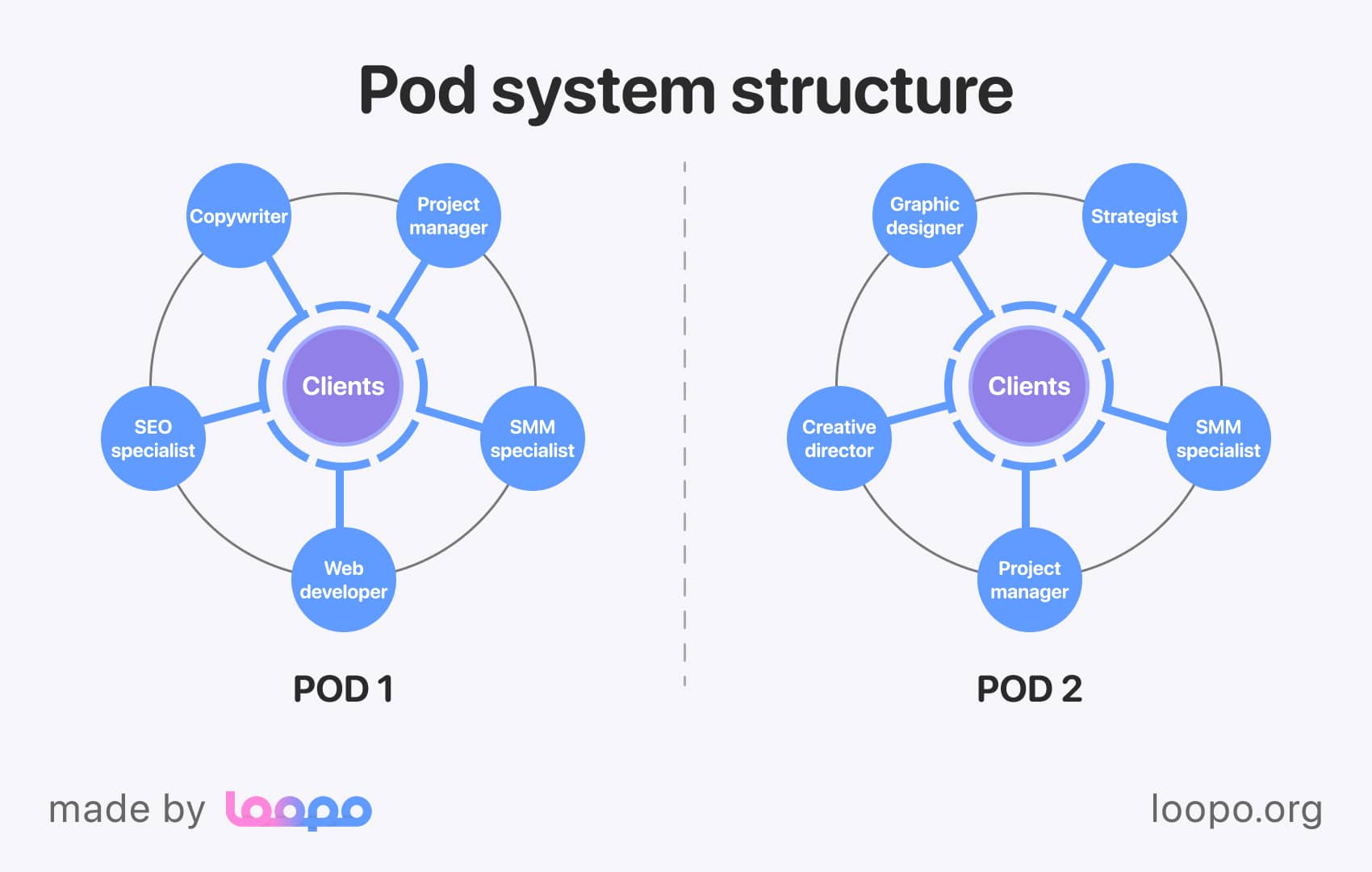
Pod system structure upsides
A flexible structure. It means that the structure can adapt to changing client needs and market conditions. Kind of like being a chameleon, always able to change, adjust, and adapt!
Ownership and accountability. It means everyone gets to shine and show off their unique talents! It’s hard to underestimate those moments of glory.
Streamlined work processes and decision-making. Meaning your team can focus on the fun stuff and get more creative - it's like having a magic wand that makes everything easier!
Pod system structure downsides
Silos between different pods. If pods aren't talking to each other, it can feel like working in separate bubbles.
Requires a lot of coordination. Sometimes different projects may require overlapping skills, and coordinating between different pods can be a bit tricky.
Overall, the pod system can be an effective way of organizing a creative agency team structure, as long as communication and coordination between different pods are maintained. It promotes collaboration and ownership among team members and can help streamline work processes.
Matrix
The matrix structure is structurally interesting. Instead of having a traditional hierarchical structure, the team is organized into "squads" or "pods" based on specific projects or areas of expertise. This means that team members can work on multiple projects at once and collaborate with colleagues across different departments and skill sets.
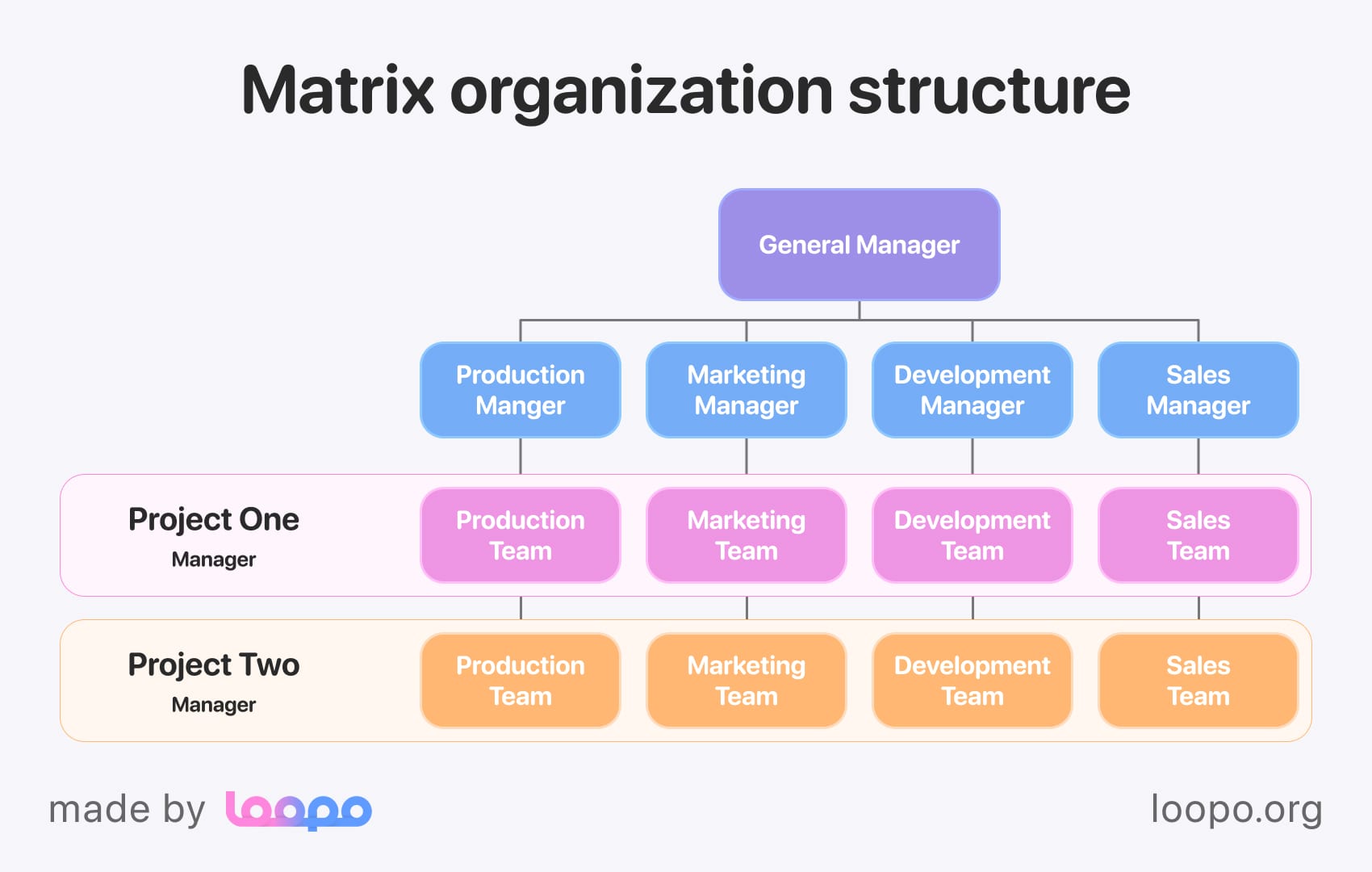
The matrix structure promotes a very energetic and innovative working environment, where team members can share their ideas and work together to solve complex problems. It also allows for more efficient use of resources, as team members can be assigned to different projects based on their skills and availability.
Traditionally, here are things you should note about it. Let’s start with the obvious advantages:
Efficient resource usage. Matrix structure implies that you can assign team members to multiple projects based on their skills and availability.
Encourages to collaborate. Team members can work closely and learn from colleagues, which can make the overall working environment feel more energetic and lively.
Mutual aid. In such teams, people often feel like a single organism that allows them to exchange experience and knowledge and grow not only as personal experts but also as a team.
Nonetheless, there are disadvantages too:
Communication issues. It can be challenging to communicate and make decisions when team members are working on different projects with their own areas of expertise.
Responsibilities tracking. It can be hard to keep track of who is responsible for what when team members are working on multiple projects at the same time.
In the aftermath, understanding different types of structures in creative teams is key to unlocking collaboration and unleashing creativity. It's like having a toolbox filled with various tools, each serving a specific purpose.
What’s more awesome, every model is flexible enough. You can quickly adopt them and switch to another one later on! Choosing the right structure is like laying the foundation for success. With good communication, clear roles, and a supportive environment, your creative team will be unstoppable, bringing their best ideas to life!
The challenges of сreative team organizational structure
Challenges aren’t problems. Instead, they’re the means to improve weak aspects of whatever you touch. Fortunately or not, there is no ultimate recipe to resolve all possible challenges you might stumble upon.
However, we know how Loopo can simplify this burden. With the Loopo AI introduction, planning has easier than ever! Let’s look at what it has to offer.
Now, let’s take a closer look at common challenges you might face on your way.
Too much feedback from too many people
Handling too much feedback on a product from too many people can be overwhelming and challenging.
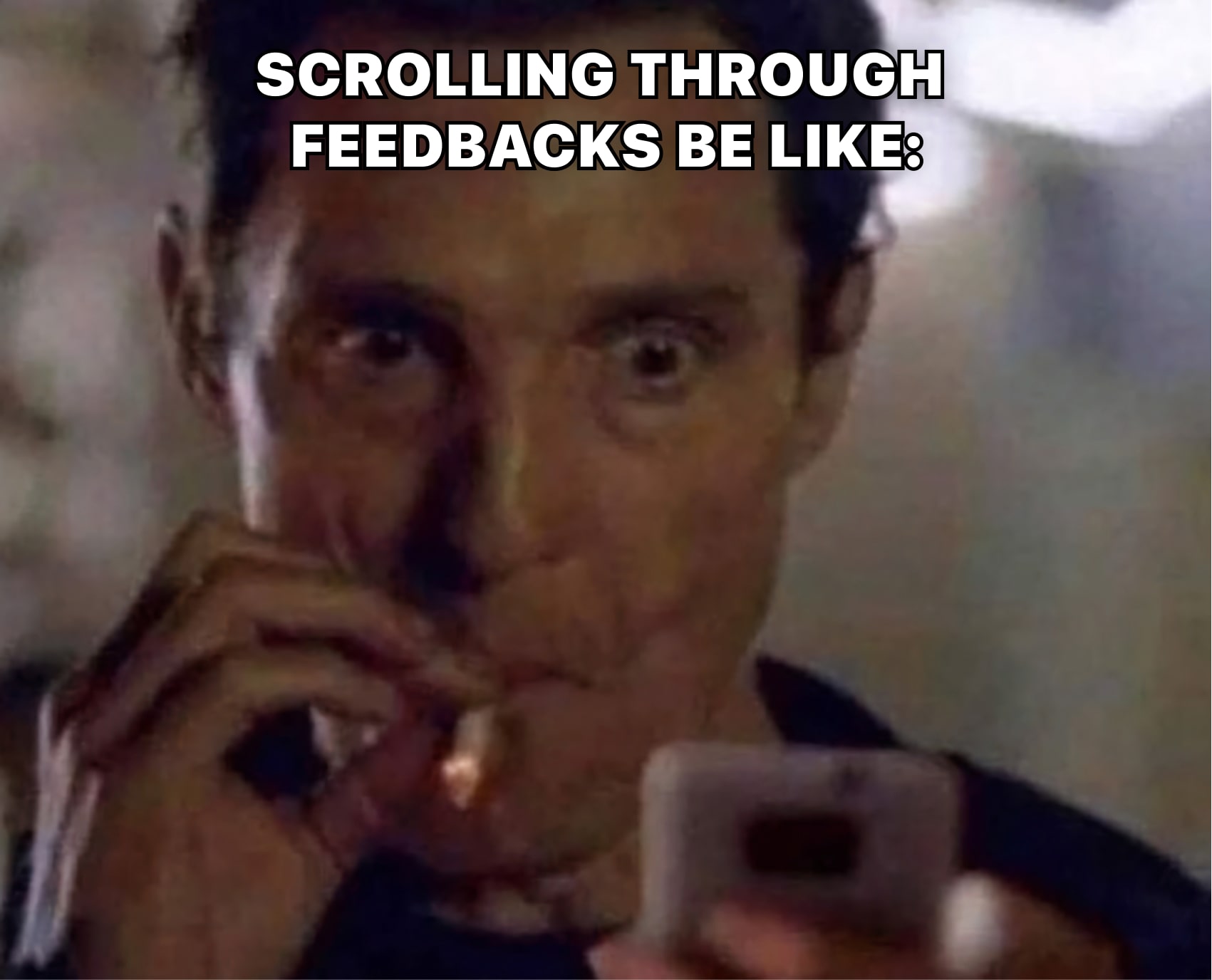
Here are several ultimate pieces of advice that can help manage it effectively:
Potential impact and relevance are key points in feedbacks you should prioritize.
Keep your product goals and objectives in mind when evaluating feedback to ensure you're on the right track.
Create a clear and organized process for collecting and evaluating feedback that everyone can follow.
Group similar feedback into categories to easily identify patterns and themes.
Be transparent and timely when responding to feedback to show that you're listening and taking it seriously.
Stay true to the product’s vision while keeping an open mind to suggestions that could improve the product.
Incoming requests make it difficult to prioritize
Handling incoming requests can be a challenging task, especially when there are dozens of them.
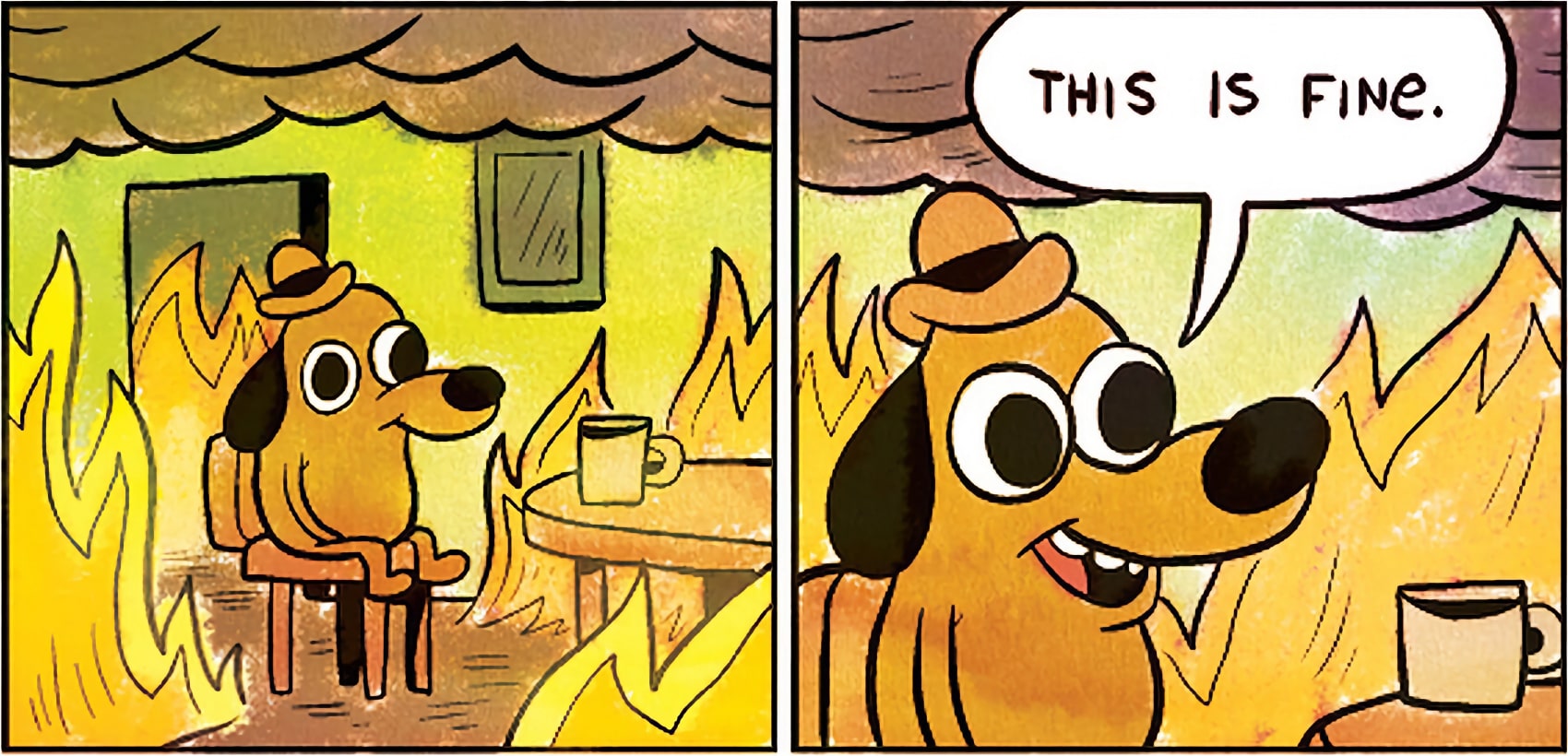
Here are some tips on how to emphasize them:
Urgency, impact, and feasibility are the main criteria by which the requests should be sorted.
Assess feasibility and alignment of the feedback with product goals.
Engage with stakeholders to understand their priorities and get feedback on the requests and figure out the most important ones to address.
Set priorities based on established categories.
Communicate with users about the status of their requests to build trustworthy relations.
Not enough information to start work
No doubt such a case may seem frustrating, but there always has to be a plan B! If not a plan B, then some kind of workaround, at least. Let it remind you of a jigsaw puzzle: even though your dog ate a few pieces, you can still make a picture of it.
Here are some ideas to find a workaround:
Identify what information is missing and what depends on it. “Not enough information” is not equal to “no information at all.” There might be just enough to give it a go. Perhaps, you could compose a working plan, create an outline, or figure out approximate deadlines.
Go grab a coffeeGather more information once you figured out the missing parts. This may involve conducting research, talking to the team, or consulting with a supervisor.
Prioritize the missing information based on what is most critical to starting work on the product. This can help you and your team focus efforts on the most important pieces of information first.
Compose a question system that outlines the most crucial questions you need to ask your client to start the working process. This will help to set short-term goals even when some info is missing.
Uncreative days and moods
Depending on the structure you chose, the approach may differ. But there should always be a solid rule to respect such moments within the team.
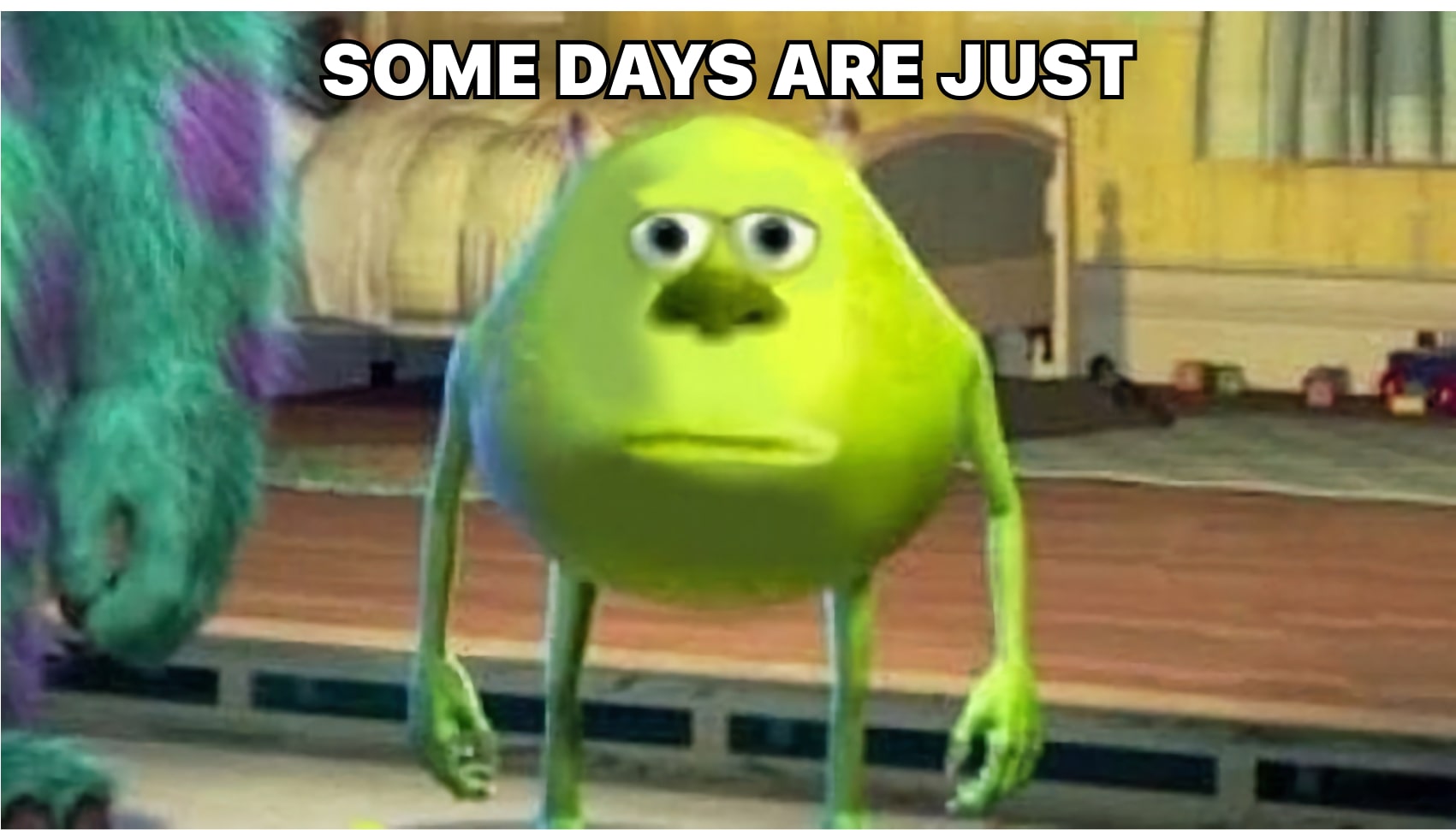
Despite the fact that people in your team literally monetize their creativity, it’s not unlimited, and thus, its absence has to be properly treated. For instance, you can think of:
Emphasizing a positive work environment where people will simply feel comfortable. You could try to encourage team members to support each other and celebrate successes, even the smallest ones can improve morale and motivation.
Encouraging breaks when you sense someone is feeling stuck or uncreative. Sometimes stepping away from a project, getting a coffee, and a small talk for a few minutes can help refresh the mind and spark new ideas.
Fostering collaboration where team members work closely with each other. Brainstorming sessions or group discussions are great mood boosters!
Celebrating moments of success, no matter how small they are. Giving a sense of support and sincerity has never worsened any team. Instead, this helps to build confidence and even a healthy rivalry!
Best hierarchy in the creative team (diagram with all dependencies)
With all due respect to other structures, teams may stick to, we simply love the pod system, and here’s why.
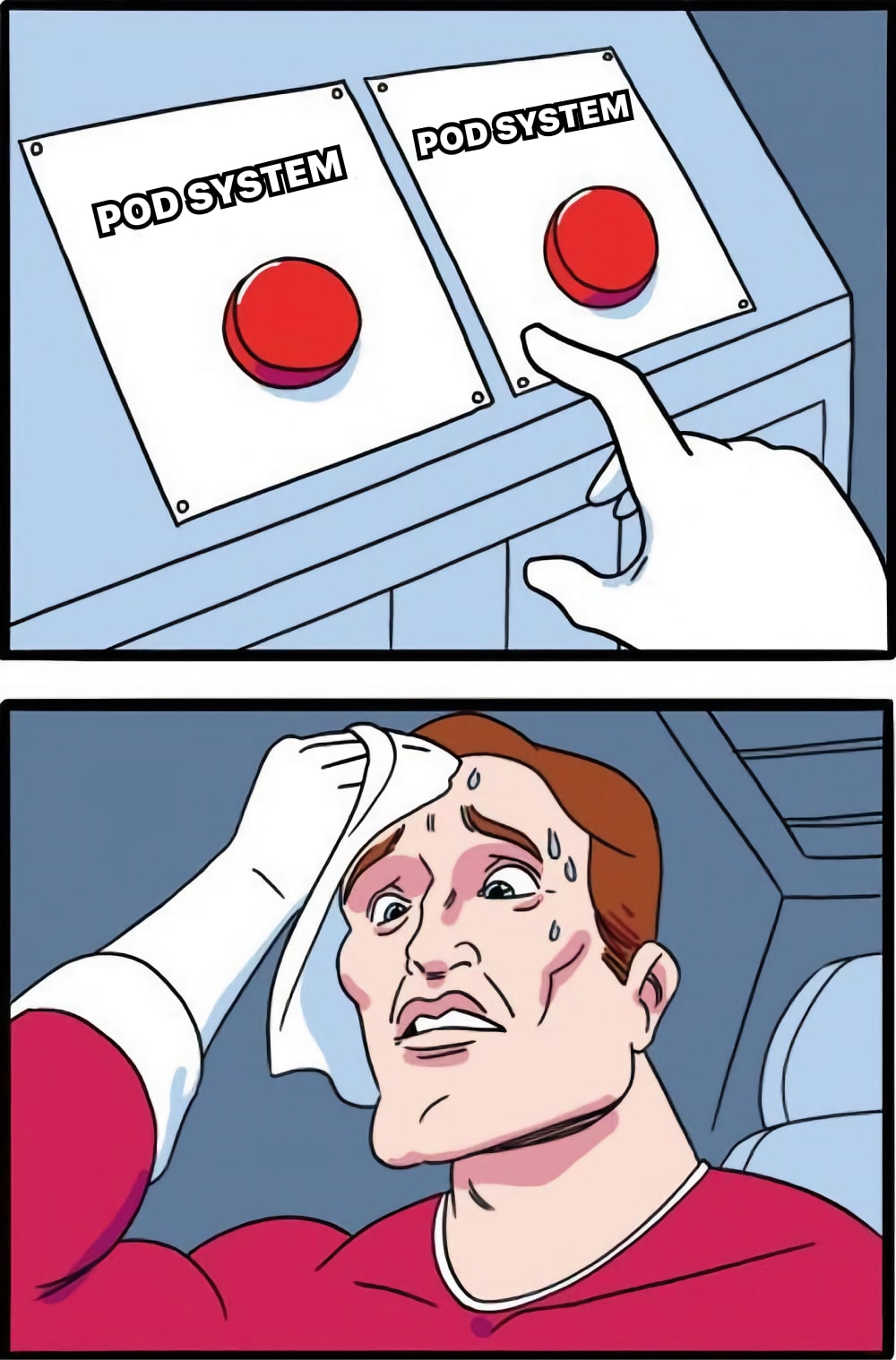
It is ENCOURAGING
In the Loopo team, for instance, we have a small group of people who do their work with passion. This structure allows us to bring everyone’s unique skills and ideas to the table. Needless to mention a number of laughs and funny stories appeared during our fruitful working days. This structure allowed us to come up with awesome solutions that might not have been possible if we worked in a strongly controlled centralized atmosphere.
It's flexible!
Pods can be created and disbanded as needed, literally on the go. It provides great room to adapt to changes quickly. This approach makes our team more agile and ready to take on new challenges as never before.
Everyone finally knows what to do…
In small manageable pods, everyone has a clear understanding of current and upcoming tasks. Besides, this approach guarantees that everyone’s investment is noticeable and appreciated. Sounds motivational, doesn’t it?
Fast decisions – happy team!
You know the frustrating feeling when you come up with the idea, but it takes forever to approve and implement it so it gets lost somewhere along the way? Yeah, everybody knows. Well, with the pod system, there are way fewer layers of hierarchy. Consequently, there are much higher chances that someone’s idea will be implemented right away!
What about the disadvantages? Here’s how we cope with them.
We eliminate silos between different pods with entertainment! At the of the day, we’re still a creative team. It’s always useful to keep in mind that team players are people too. Everybody likes beer Fridays, coffee breaks, ping-pong competitions, and outdoor weekends. (We're not implying anything, it's just food for thought)
We handle coordination with technology. Come on, it’s 2024 outside! The tech world per se has already come up with so many exciting collaboration tools! Yes, coordinating between different pods can be tricky, but:
Need a reliable communication tool? – There’s Slack!
Need a great collaboration tool? – There’s Loopo!
Need to write an article like this one? – ChatGPT is free!Task management? – That’s Loopo too!
Need a brainstorming-oriented whiteboard? – Figma has a FigJam!
Need to compose a huge database of something? – You can always nail it with good old Excel or Google Sheets!
Today’s technologies can help you solve literally any coordination-related issue with just enough involvement and care on your end.
Loopo: best tool for content teams management
In the creative team management world, Loopo is ready to be your best friend. Our content management solution allows you to create workspaces for your team, schedule publications, and create content.
In terms of content management, Loopo allows you to keep the entire workflow within the app. Frankly, “entire” means ENTIRE, as you can easily structure files, images, and analytical data in a neatly organized way.
Did we mention how useful it is for marketing purposes? Well, Loopo has great potential to schedule social media content, publications, articles, and so much more!
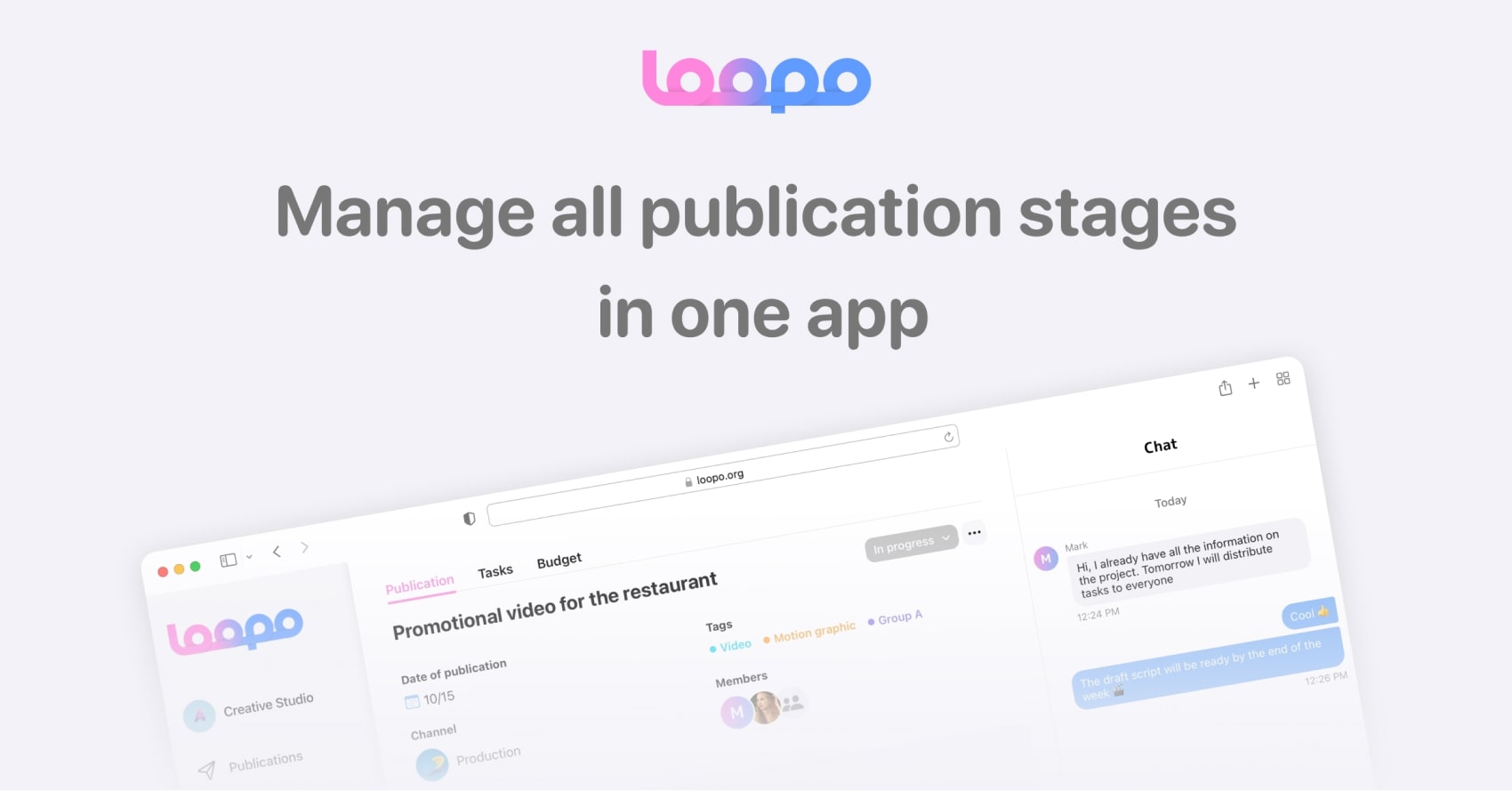
What’s more curious, with a recent Loopo AI introduction, you can forget about being stuck without ideas. It will help you at any point of your journey simplifying article writing, content for socials, and daily tasks composition. As a result, Loopo can seamlessly integrate into your working environment!
Bottom line
Well, that's a wrap, folks! We hope you're feeling inspired to build or manage your very own creative dream team. Keep in mind that it's all about finding the right balance between creative geniuses and organizational wizards!
And who knows, maybe one day you'll be the proud owner of a creative team so awesome they'll write songs about it. (Okay, maybe not, but we can dream, right?)
In all seriousness, though, we hope this article has given you some helpful insights into the anatomy of a creative team. Now go forth and create something amazing and let the Loopo’s light guide you!

